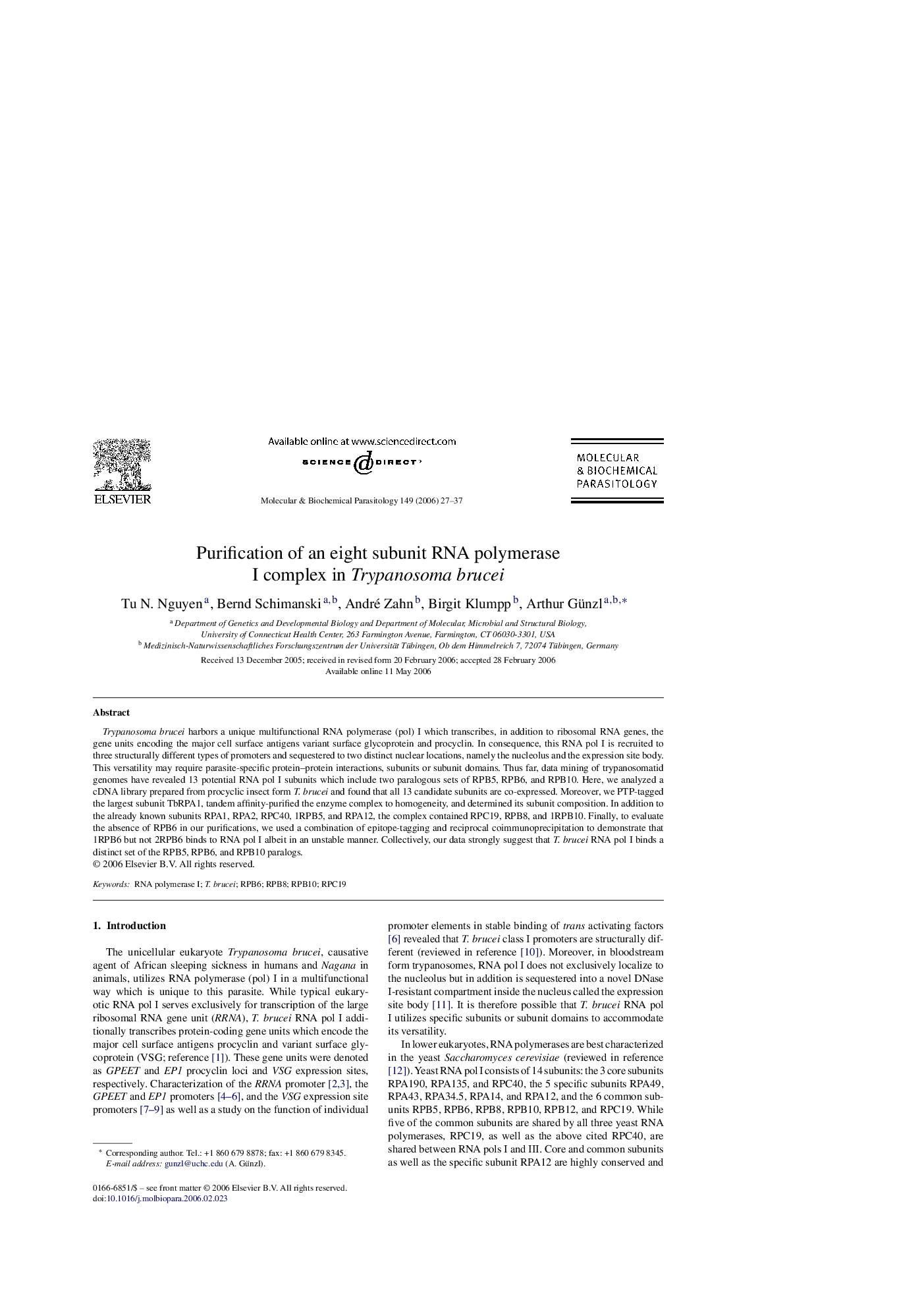| Article ID | Journal | Published Year | Pages | File Type |
|---|---|---|---|---|
| 2830395 | Molecular and Biochemical Parasitology | 2006 | 11 Pages |
Trypanosoma brucei harbors a unique multifunctional RNA polymerase (pol) I which transcribes, in addition to ribosomal RNA genes, the gene units encoding the major cell surface antigens variant surface glycoprotein and procyclin. In consequence, this RNA pol I is recruited to three structurally different types of promoters and sequestered to two distinct nuclear locations, namely the nucleolus and the expression site body. This versatility may require parasite-specific protein–protein interactions, subunits or subunit domains. Thus far, data mining of trypanosomatid genomes have revealed 13 potential RNA pol I subunits which include two paralogous sets of RPB5, RPB6, and RPB10. Here, we analyzed a cDNA library prepared from procyclic insect form T. brucei and found that all 13 candidate subunits are co-expressed. Moreover, we PTP-tagged the largest subunit TbRPA1, tandem affinity-purified the enzyme complex to homogeneity, and determined its subunit composition. In addition to the already known subunits RPA1, RPA2, RPC40, 1RPB5, and RPA12, the complex contained RPC19, RPB8, and 1RPB10. Finally, to evaluate the absence of RPB6 in our purifications, we used a combination of epitope-tagging and reciprocal coimmunoprecipitation to demonstrate that 1RPB6 but not 2RPB6 binds to RNA pol I albeit in an unstable manner. Collectively, our data strongly suggest that T. brucei RNA pol I binds a distinct set of the RPB5, RPB6, and RPB10 paralogs.
